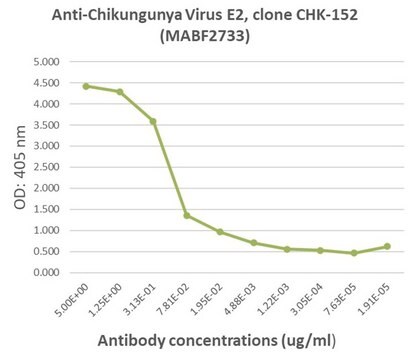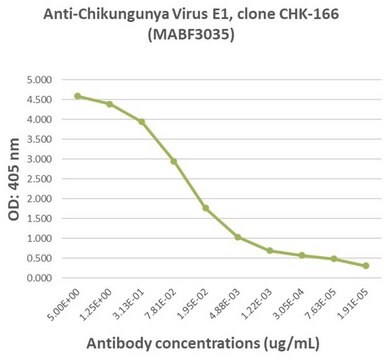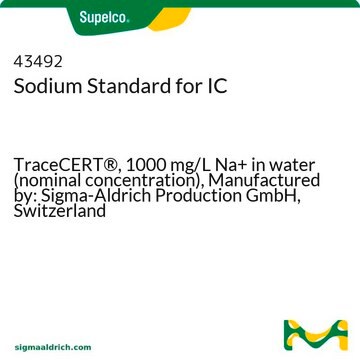MABF2052
Anti-Chikungunya virus Antibody, clone 3E7b
clone 3E7b, from mouse
Sinónimos:
CHIKV
About This Item
Productos recomendados
biological source
mouse
antibody form
purified immunoglobulin
antibody product type
primary antibodies
clone
3E7b, monoclonal
species reactivity
virus
packaging
antibody small pack of 25 μL
technique(s)
ELISA: suitable
immunocytochemistry: suitable
neutralization: suitable
western blot: suitable
isotype
IgMκ
target post-translational modification
unmodified
General description
Specificity
Immunogen
Application
Inflammation & Immunology
Immunocytochemistry Analysis: A representative lot detected Chikungunya virus in Immunocytochemistry applications (Lam, S., et. al. (2015). MAbs. 7(6):1178-94).
Immunocytochemistry Analysis: A 1:100 dilution from a representative lot detected Chikungunya virus in BHK cells infected with Chikungunya virus. (Courtesy from an independent lab).
Neutralizing Analysis: A representative lot neutralized Chikungunya virus in Neutralizing applications (Lam, S., et. al. (2015). MAbs. 7(6):1178-94).
ELISA Analysis: A representative lot detected Chikungunya virus in ELISA applications (Lam, S., et. al. (2015). MAbs. 7(6):1178-94).
Quality
Isotype Analysis: The identity of this monoclonal antibody is confirmed by isotype test to be mouse IgMk.
Physical form
Storage and Stability
Other Notes
Disclaimer
Not finding the right product?
Try our Herramienta de selección de productos.
Certificados de análisis (COA)
Busque Certificados de análisis (COA) introduciendo el número de lote del producto. Los números de lote se encuentran en la etiqueta del producto después de las palabras «Lot» o «Batch»
¿Ya tiene este producto?
Encuentre la documentación para los productos que ha comprado recientemente en la Biblioteca de documentos.
Nuestro equipo de científicos tiene experiencia en todas las áreas de investigación: Ciencias de la vida, Ciencia de los materiales, Síntesis química, Cromatografía, Analítica y muchas otras.
Póngase en contacto con el Servicio técnico







